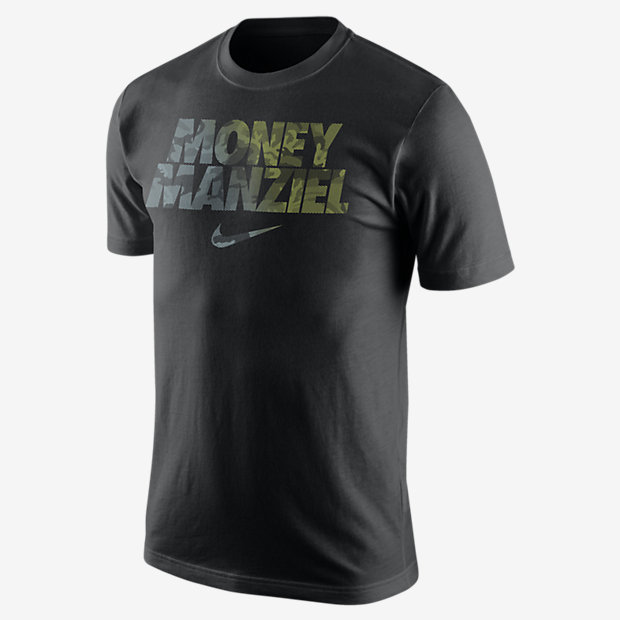In order for Nike to build a national brand in the United States, the company was forced to address different microcultures in order to increase and sustain brand loyalty from customers around the country. A microculture is defined as "a group of people who share similar values and tastes that are subsumed within a larger culture" (Babin 191). In this case, the larger culture would be the national, American culture, which is broken down into the numerous microcultures to be discussed.
The first major group of microcultures in the US is regional microculture. In 1981, Joel Garreau published a book relatively arbitrarily dividing North America into 9 different regions. For the purposes of Nike, however, an even larger number of divisions is more helpful for learning about consumer behavior. Being an athletic wear company, athletes and athletic teams (professional and collegiate) play a major role in the sale of many products, such as shoes, t-shirts, athletic shorts, etc. By finding the regions where athletes and teams are most and least popular, Nike can tailor their products to certain regions in the country. For example, selling Ohio State t-shirts in Michigan would be a disastrous move. Another example would be Johnny Manziel, a polarizing sports figure who plays for the Cleveland Browns. He is a player who most people love to have on their team, but is an extremely easy target for opposing fans. For this reason, Nike needs to carefully target (and stay away from) certain regional microcultures with their "Money Manziel" t-shirt line.
 The gender microculture is also very important to Nike. In stores they have both "Men's" and "Women's" sections. Similarly, the online website has tabs for both men and women. This division of gender illustrates Nike's acknowledgment of sex roles between their customers. Sex roles "refer to the societal expectations for men and women among members of a cultural group" (Babin 194). An example of this is easily found by simply clicking on the "Men" and "Women" tabs on the website. When you click on the "Women" tab, a pink shoe covers the screen (seen on the right). When you click on the "Men" tab, a blue and yellow shoe covers the screen. The fact that Nike believes a pink shoe fits best for Women exemplifies the societal expectations that exist in our country about fashion.
The gender microculture is also very important to Nike. In stores they have both "Men's" and "Women's" sections. Similarly, the online website has tabs for both men and women. This division of gender illustrates Nike's acknowledgment of sex roles between their customers. Sex roles "refer to the societal expectations for men and women among members of a cultural group" (Babin 194). An example of this is easily found by simply clicking on the "Men" and "Women" tabs on the website. When you click on the "Women" tab, a pink shoe covers the screen (seen on the right). When you click on the "Men" tab, a blue and yellow shoe covers the screen. The fact that Nike believes a pink shoe fits best for Women exemplifies the societal expectations that exist in our country about fashion. By recognizing distinct microcultures, Nike has been able to gain and retain customers with many different backgrounds, coming from many different microcultures.

Trey, I really enjoyed reading your blog on how many microcultures (Babin, 191) Nike actually has to take into account for when trying to sell and distribute their products across the country. When dealing with these microcultures I feel like it must be extremely hard to determine what players jerseys and merchandise they want to sell nationally. Although it would be easy to figure out what smaller markets they should sell a specific jersey in, but to determine what player and where they would sell it must be a tough thing to figure out. One example that you said is the Manziel merchandise. He is such a popular athlete but he is also so controversial. Another aspect from your blog that I found interesting was the idea about the neon colored merchandise. From my experience I think Nike did a great job incorporating neon into their lines for younger generations but at the same time didn't make it to flashy to the point that they lose the older customers because they are not fans of the neon. Overall I found your ideas on Nike very interesting.
ReplyDeletePeter
Trey,
ReplyDeleteAnother amazing blog! Wow! I thought it was very interesting how you chose to discuss the microcultures that Nike targets in order to sell the most gear to help their bottomline and to please their consumers. One aspect that also would have been interesting would be time pressure. "Time pressure represents an urgency to act based on some real or self-imposed deadline" (Babin/Harris 219). Nike capitalizes on the fact that athletes need to purchase items before their respective seasons. For instance, at this time of year in high school I was always in the market to buy new baseball spikes and batting gloves. Every spring, Nike would send me a catalogue that helped to further that urgency. I always ended up buying Nike products as well.
I think it would have taken you about 10,000 words to highlight all of the situational factors that Nike addresses but you did a great job with 500 words. It really is too bad that this is the last blog for the course. I'll miss your thoughts on Nike. Great job on all three blogs!
Jack